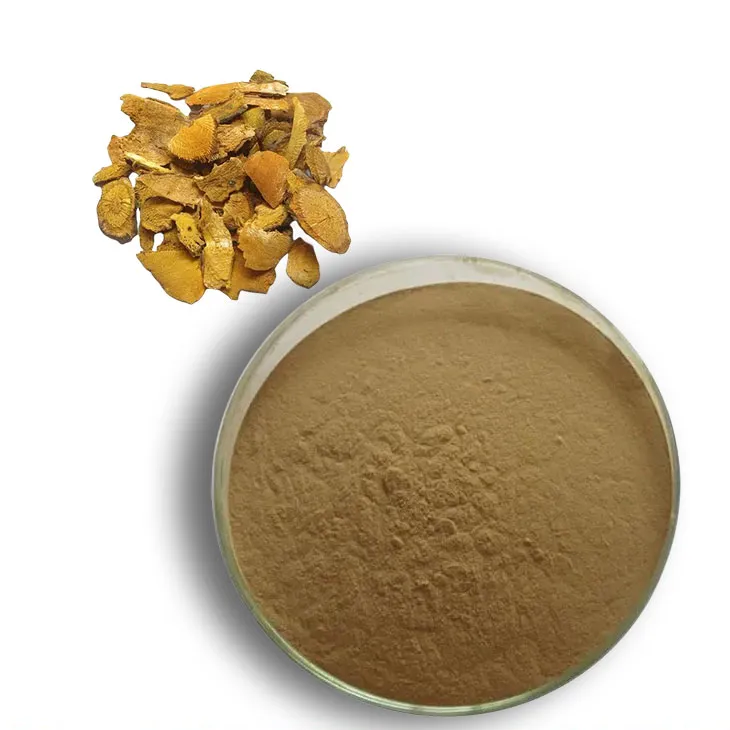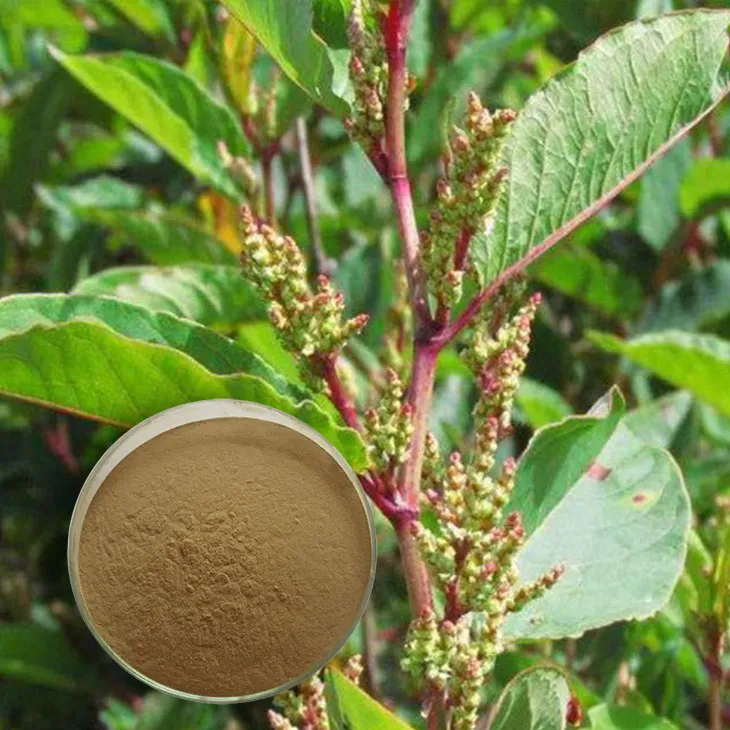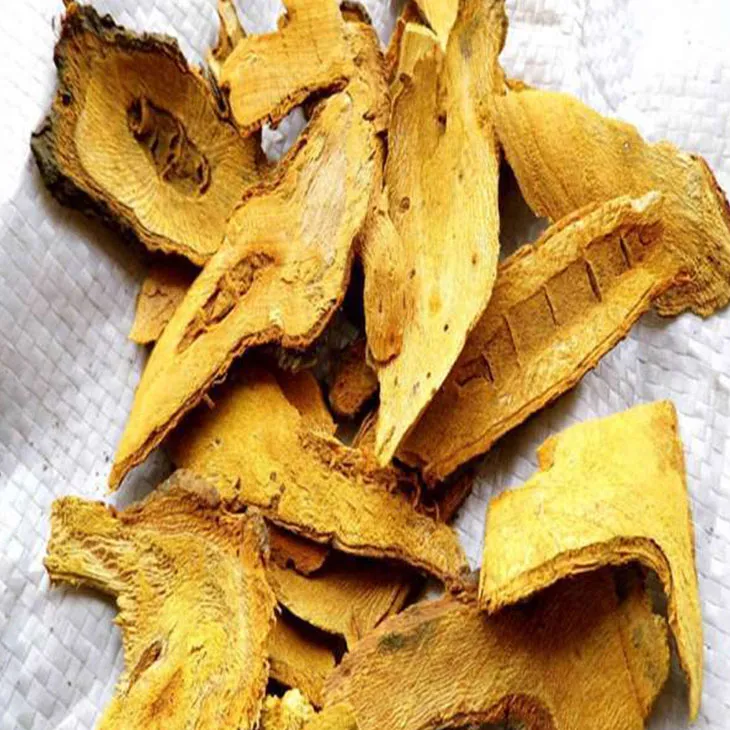- 0086-571-85302990
- sales@greenskybio.com
The process of extracting polydatin from polygonum cuspidatum extract.
2024-11-28

1. Introduction to Polydatin and Polygonum Cuspidatum
Polydatin, also known as trans - resveratrol - 3 - O - β - D - glucopyranoside, is a natural phenolic compound. It has a unique chemical structure, which consists of a resveratrol moiety and a glucose unit. This structure endows polydatin with certain chemical and biological properties. Polygonum cuspidatum, a traditional Chinese medicinal plant, is a rich source of polydatin. The relationship between polydatin and polygonum cuspidatum is that polydatin is one of the important bioactive components in polygonum cuspidatum.

2. Pretreatment of Polygonum Cuspidatum
The pretreatment of polygonum cuspidatum plays a crucial role in the extraction of polydatin.
2.1 Drying
Drying is an essential step. Different drying methods can affect the quality and subsequent extraction efficiency of polygonum cuspidatum. For example, air - drying is a traditional method. It is simple and cost - effective, but it may take a relatively long time. On the other hand, oven - drying can control the drying temperature and time more precisely. However, inappropriate temperature may cause the degradation of some active components.
2.2 Grinding
After drying, grinding the polygonum cuspidatum into a suitable particle size is necessary. Fine grinding can increase the surface area of the raw material, which is beneficial for the extraction solvent to contact with the active components. However, if the particle size is too small, it may lead to problems such as clogging during the extraction process.

3. Selection of Extraction Solvents
The choice of extraction solvents has a significant impact on the extraction of polydatin from Polygonum Cuspidatum Extract.
3.1 Ethanol
Ethanol is one of the most commonly used solvents. It has good solubility for polydatin and is relatively safe and easy to obtain. Ethanol - based extraction can be carried out under different concentrations. For example, a certain proportion of aqueous ethanol solution can effectively extract polydatin while maintaining the activity of other components in polygonum cuspidatum.
3.2 Methanol
Methanol also has good solubility for polydatin. However, compared with ethanol, methanol is more toxic. Although it can achieve a relatively high extraction rate in some cases, special safety precautions need to be taken during the extraction process to prevent methanol poisoning.
3.3 Other Solvents
In addition to ethanol and methanol, some other solvents or solvent mixtures are also being explored. For example, ethyl acetate - water mixtures may have unique extraction effects on polydatin in certain situations. However, the compatibility of these solvents with polydatin and the overall extraction efficiency need to be further studied.

4. Advanced Extraction Techniques
In order to improve the extraction yield and purity of polydatin, advanced extraction techniques are being widely studied and applied.
4.1 Ultrasonic - Assisted Extraction
Ultrasonic - assisted extraction is a popular technique. Ultrasonic waves can generate cavitation effects in the extraction solvent. This cavitation effect can break the cell walls of polygonum cuspidatum more effectively, allowing the extraction solvent to better penetrate into the cells and dissolve polydatin. Compared with traditional extraction methods, ultrasonic - assisted extraction can significantly shorten the extraction time and improve the extraction efficiency.
4.2 Microwave - Assisted Extraction
Microwave - assisted extraction is another effective method. Microwaves can heat the extraction system rapidly and uniformly. This rapid heating can accelerate the mass transfer process of polydatin from the solid phase of polygonum cuspidatum to the extraction solvent. Moreover, microwave - assisted extraction can also reduce the consumption of extraction solvents and energy to a certain extent.
4.3 Supercritical Fluid Extraction
Supercritical fluid extraction uses supercritical fluids, such as supercritical carbon dioxide, as extraction solvents. Supercritical carbon dioxide has the characteristics of low viscosity, high diffusivity, and easy separation from the extract. It can selectively extract polydatin from polygonum cuspidatum with high efficiency and purity. However, the equipment for supercritical fluid extraction is relatively expensive, which limits its widespread application at present.
5. Purification Process
After the extraction of polydatin from Polygonum Cuspidatum Extract, purification is necessary to obtain high - purity polydatin.
5.1 Column Chromatography
Column chromatography is a commonly used purification method. In column chromatography, a suitable stationary phase, such as silica gel or reversed - phase C18, is selected. The crude extract containing polydatin is loaded onto the column, and then different eluents are used to elute the column. By adjusting the composition and polarity of the eluents, polydatin can be separated from other impurities and obtained with high purity.
5.2 Recrystallization
Recrystallization is also an important purification method. By dissolving the crude polydatin in a suitable solvent at a high temperature and then slowly cooling it, polydatin can be recrystallized. This method can effectively remove some soluble impurities and improve the purity of polydatin.
6. Future Prospects of Polydatin Extraction Technology
The future development of polydatin extraction technology is full of opportunities and challenges.
6.1 Innovation
Continuous innovation in extraction and purification techniques is crucial. New extraction solvents and techniques may be developed to further improve the extraction efficiency and purity of polydatin. For example, the combination of different advanced extraction techniques or the exploration of new types of extraction solvents based on the understanding of the chemical properties of polydatin.
6.2 Sustainability
In the future, the sustainability of polydatin extraction should also be considered. This includes reducing the consumption of extraction solvents, using renewable energy sources in the extraction process, and ensuring the sustainable use of polygonum cuspidatum resources. For example, developing green extraction processes that are more environmentally friendly and can meet the growing demand for polydatin in the pharmaceutical and health - care industries.
FAQ:
What is the chemical structure of polydatin?
Polydatin has a specific chemical structure which consists of a stilbene backbone. It is a glucoside of resveratrol, with a glucose moiety attached to the resveratrol molecule. This structure gives it certain physical and chemical properties that are relevant to its extraction from polygonum cuspidatum.
Why is the pretreatment of polygonum cuspidatum important for polydatin extraction?
Pretreatment such as drying and grinding is crucial. Drying helps to reduce the moisture content, preventing spoilage and also making the plant material more suitable for extraction. Grinding breaks down the plant tissue into smaller particles, increasing the surface area available for the extraction solvent to interact with. This enhanced interaction leads to a more efficient extraction of polydatin.
What are the common extraction solvents for polydatin?
Common extraction solvents for polydatin include ethanol, methanol, and water - ethanol mixtures. Ethanol is often preferred due to its good solubility for polydatin, relatively low toxicity, and ease of handling. Methanol also has good extraction capabilities but is more toxic. Water - ethanol mixtures can offer a balance between solubility and safety, and their composition can be adjusted according to the specific requirements of the extraction process.
How do advanced extraction techniques improve polydatin extraction?
Advanced extraction techniques such as ultrasonic - assisted extraction, microwave - assisted extraction, and supercritical fluid extraction can improve polydatin extraction. Ultrasonic - assisted extraction uses ultrasonic waves to create cavitation, which helps to break down cell walls and enhance the release of polydatin. Microwave - assisted extraction heats the sample rapidly and uniformly, increasing the mass transfer rate. Supercritical fluid extraction, often using carbon dioxide as the supercritical fluid, offers high selectivity and can produce a purer extract, all of which contribute to a higher extraction yield and purity of polydatin.
What is the role of column chromatography in the purification of polydatin?
Column chromatography plays a vital role in the purification of polydatin. It separates polydatin from other components in the extract based on differences in their physical and chemical properties such as polarity and molecular size. The sample is loaded onto the column, and different components elute at different rates as a mobile phase passes through the stationary phase in the column. This allows for the isolation and purification of polydatin.
Related literature
- Polydatin: A Review of Its Pharmacological Effects"
- "Extraction and Purification of Bioactive Compounds from Polygonum Cuspidatum: A Comprehensive Study"
- "Advances in the Extraction Technologies of Polydatin from Polygonum Cuspidatum"
- ▶ Hesperidin
- ▶ citrus bioflavonoids
- ▶ plant extract
- ▶ lycopene
- ▶ Diosmin
- ▶ Grape seed extract
- ▶ Sea buckthorn Juice Powder
- ▶ Beetroot powder
- ▶ Hops Extract
- ▶ Artichoke Extract
- ▶ Reishi mushroom extract
- ▶ Astaxanthin
- ▶ Green Tea Extract
- ▶ Curcumin Extract
- ▶ Horse Chestnut Extract
- ▶ Other Problems
- ▶ Boswellia Serrata Extract
- ▶ Resveratrol Extract
- ▶ Marigold Extract
- ▶ Grape Leaf Extract
- ▶ blog3
- ▶ blog4
-
Extraction process of wheat germ extract.
2024-11-28
-
100% Pure Natural L - Theanine Powder.
2024-11-28
-
The best nutmeg extract in nature.
2024-11-28
-
Organic Vitamin B9 Powder Factory.
2024-11-28
-
Chinese Dandelion Root Extract Factories.
2024-11-28
-
Cactus Extract
2024-11-28
-
Milk Thistle Extract
2024-11-28
-
Acerola Extract
2024-11-28
-
Lemon Extract
2024-11-28
-
Hawthorn Extract
2024-11-28
-
Hericium erinaceus extract powder
2024-11-28
-
Resveratrol extract
2024-11-28
-
White Peony Extract
2024-11-28
-
Wheat Germ Extract
2024-11-28
-
Withania Somnifera Extract
2024-11-28





















